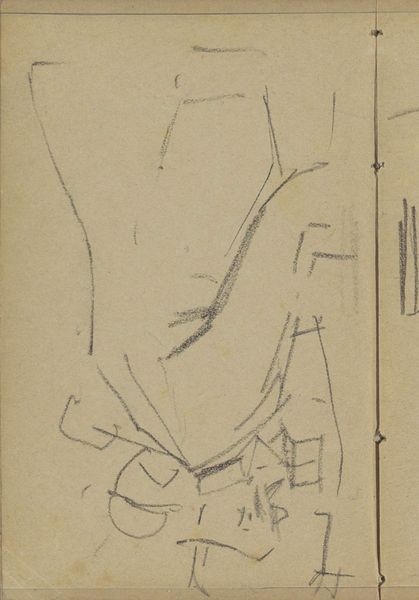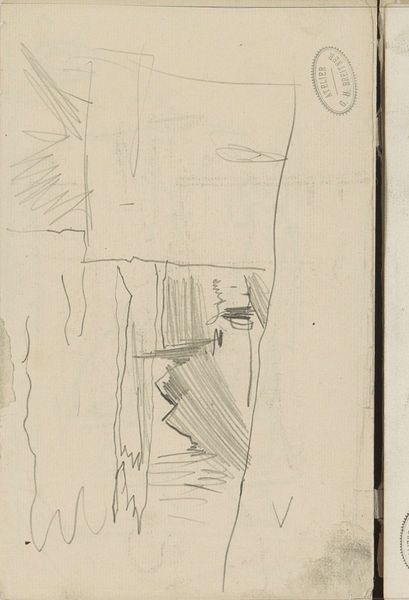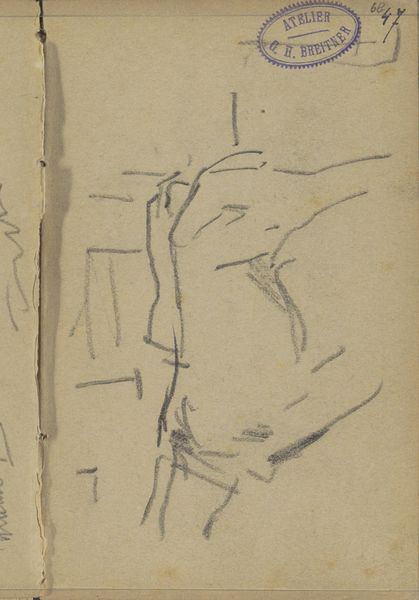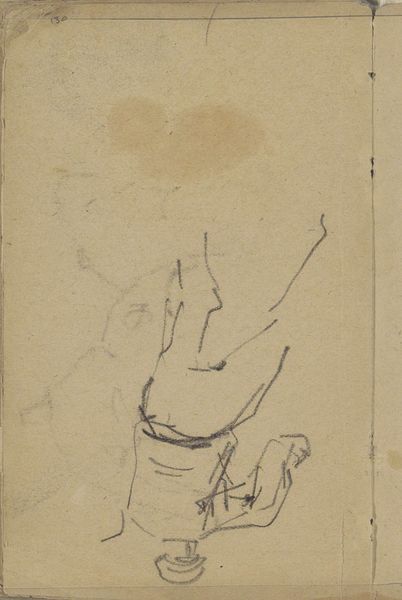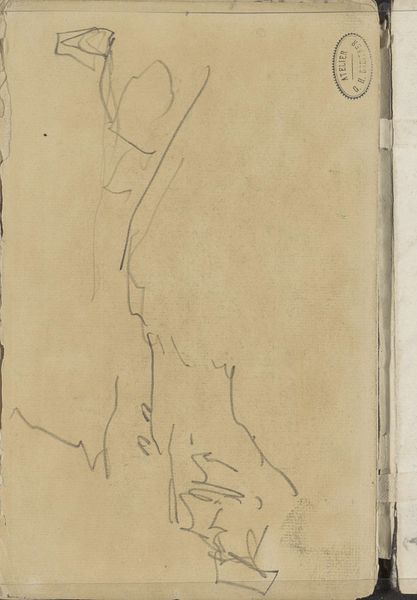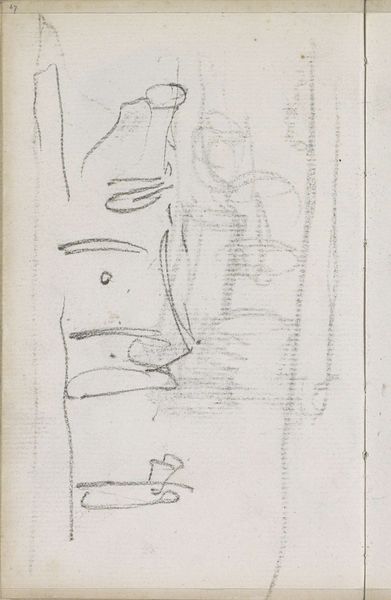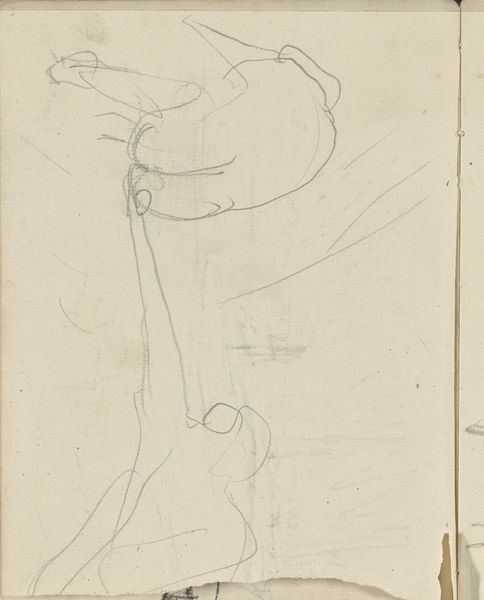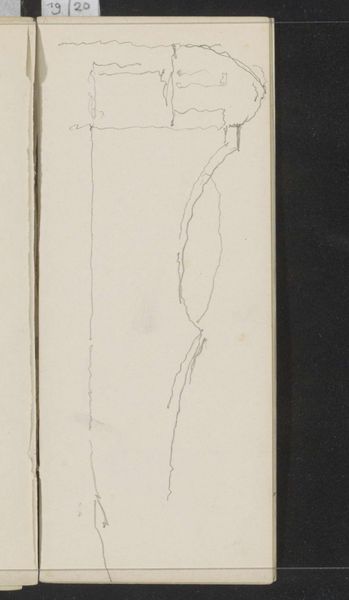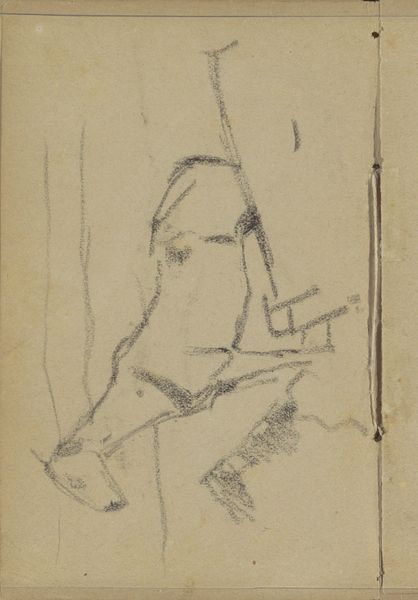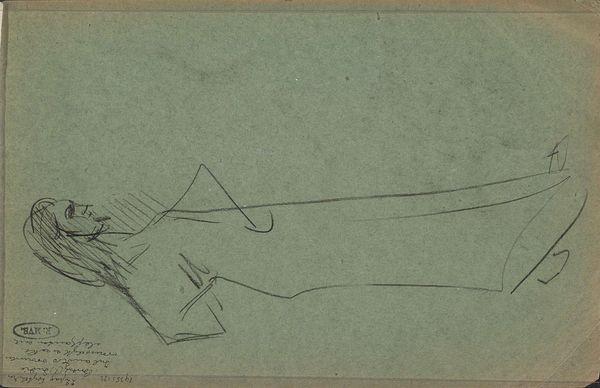
drawing, pencil
#
drawing
#
amateur sketch
#
light pencil work
#
pen sketch
#
landscape
#
figuration
#
personal sketchbook
#
idea generation sketch
#
ink drawing experimentation
#
pen-ink sketch
#
pencil
#
line
#
sketchbook drawing
#
sketchbook art
#
realism
#
initial sketch
Copyright: Rijks Museum: Open Domain
Curator: We're looking at a sketch titled "Studie" by Anton Mauve, dating from around 1876 to 1879. It’s a small drawing using pencil, held here in the Rijksmuseum collection. Editor: Immediately, the stark minimalism strikes me. Just a few lines on paper, but they suggest a form... maybe a figure bundled in cloth or a rudimentary building. It's like visual poetry, distilled to its absolute essence. Curator: It's intriguing how Mauve utilizes such economical means, especially if we consider his training and the broader artistic landscape of the period. This was a time of burgeoning industrialization; so consider the availability and cost of the materials he uses – pencil and paper becoming more accessible and changing the culture of art making itself. Editor: Yes, but observe the lines themselves. Their fragility, their hesitant quality – they create a spatial relationship that suggests a figure and a space that are tenuous, fleeting. The bareness is actually part of the experience. The stark, untouched paper serves as the work’s setting. Curator: Indeed, the lack of overt detail invites the viewer to participate in the act of creation. The viewer completes it, which parallels Mauve's own process in creating sketches that might lead to larger works. His social context as a relative of Vincent van Gogh is always important here; they would have understood limitations on material as inherent to the act of art making. Editor: The composition further emphasizes this feeling. The figure – or structure – sits slightly off-center, almost dissolving into the void of the paper, reinforcing the transient impression. Curator: Looking at Mauve's sketch with this material consciousness helps one understand a key element in his era's move toward representing ordinary life: the shift from idealized depictions towards art objects made possible through everyday, industrial items like pencil and paper. Editor: Well, regardless of the larger socio-economic implications, for me, the aesthetic pleasure of "Studie" lies in its quietude and the sense of potential energy contained within so few marks. Curator: I agree. Understanding how economic forces shaped these visual strategies certainly allows us a wider range for our reception of his work.
Comments
No comments
Be the first to comment and join the conversation on the ultimate creative platform.
